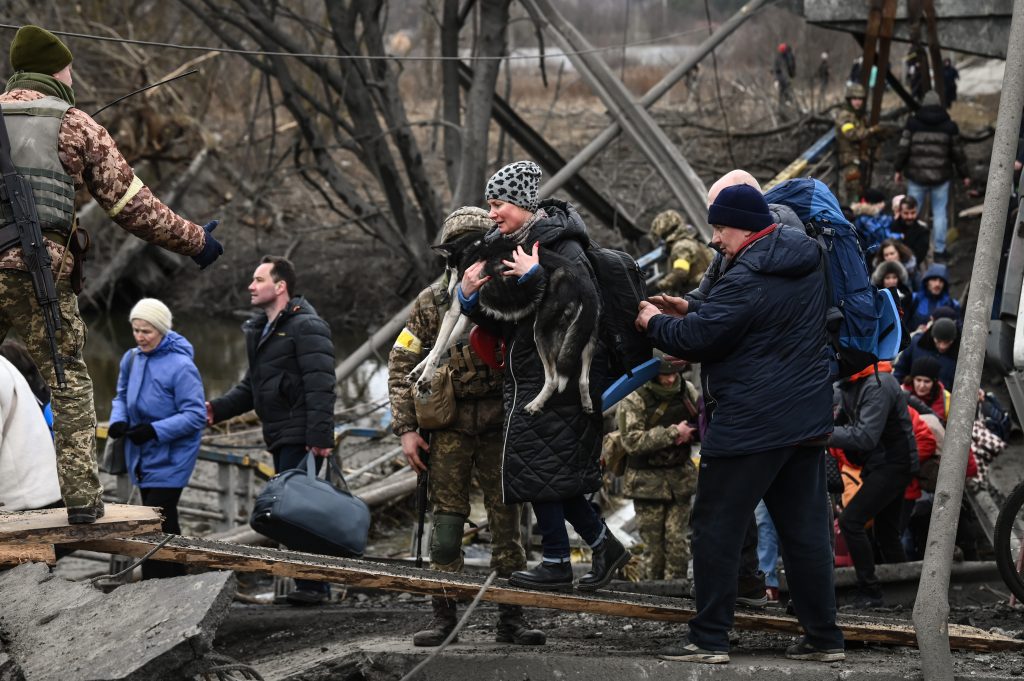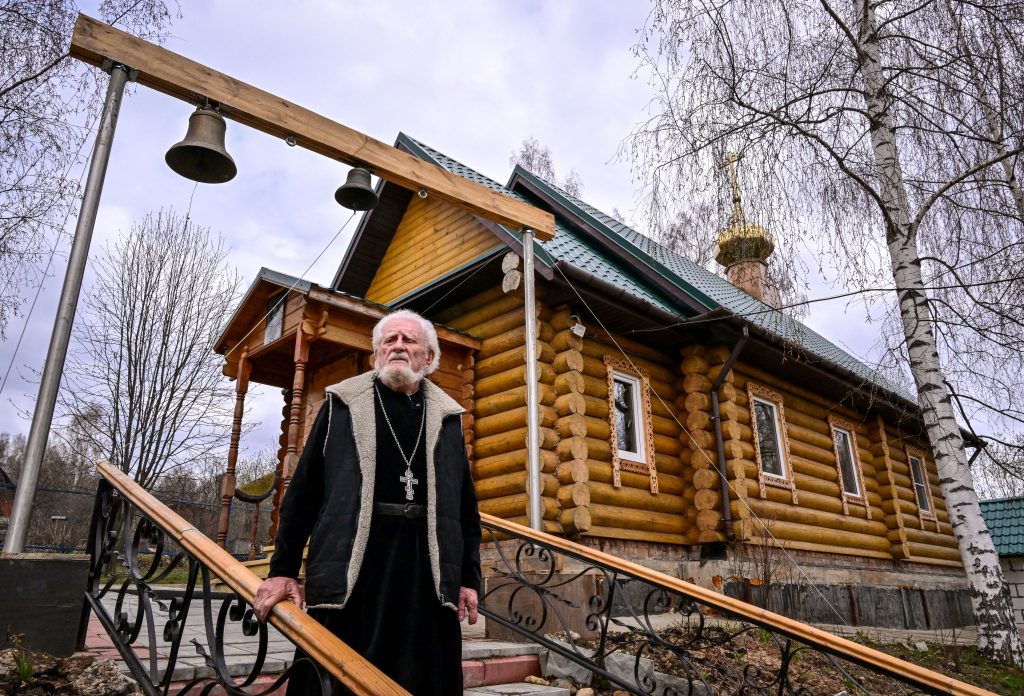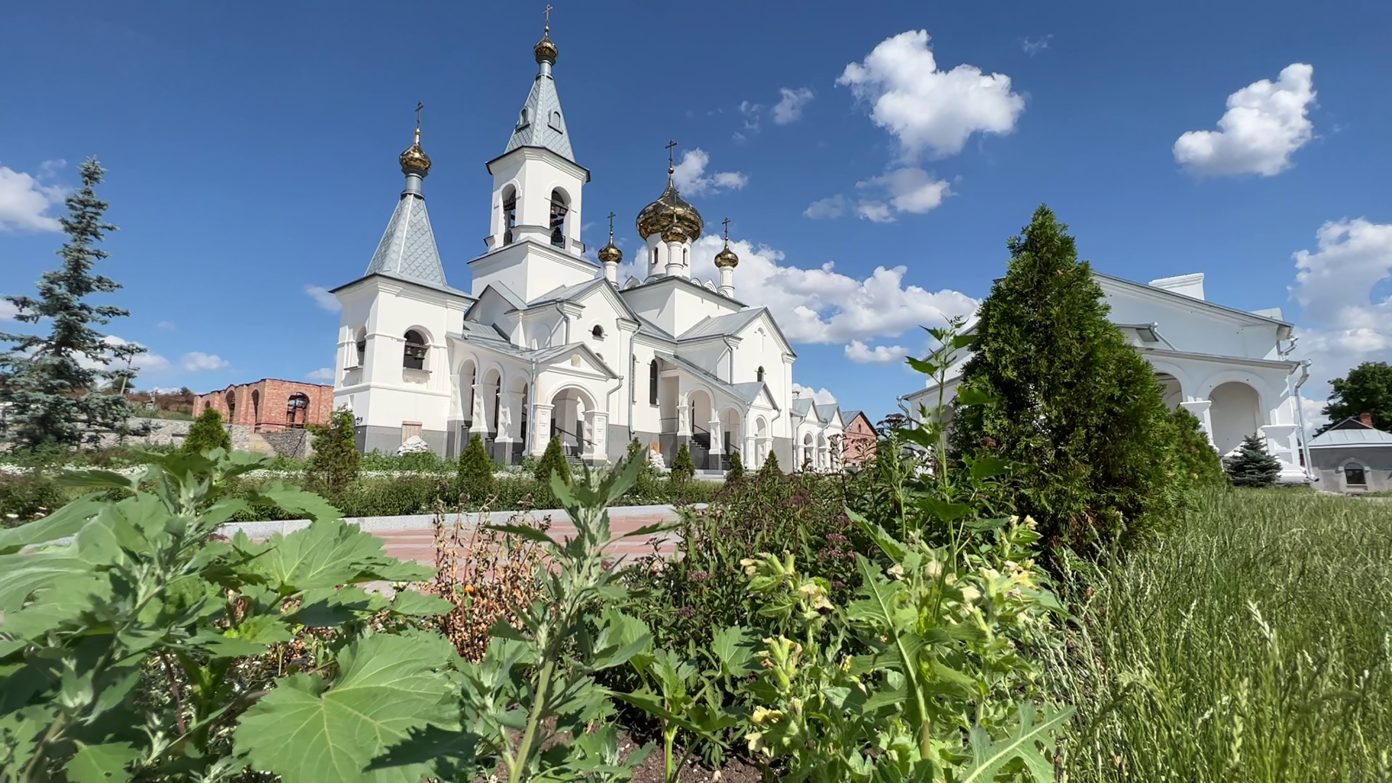“There you can see a crater from a Grad (missile),” black-clad nun Sister Anastasia said, pointing to a giant hole in her community’s well-tended garden.
In another corner of the garden, she gestured at damage caused by a cluster bomb.
Under near-constant bombardment by Russian forces, she and a group of other Orthodox nuns and pilgrims live in one of the villages closest to Ukraine’s frontline, near the city of Sloviansk.
“We are all alive, yes. No one has left. This is our home,” she said quietly, her face framed by a black veil as shelling roared in the distance.
“We have quite a few nuns and we also have pilgrims. All together it’s 60 people.”
The white-painted perimeter walls were pockmarked with shrapnel holes and just outside, there was a huge crater in a lawn.
Entrance to the religious community, known as a skete, in the village of Adamivka is only possible with permission from the Ukrainian military based in the area.
Beyond the village and two neighbouring settlements are fields and then Russia’s forces, firing at Ukrainian artillery positions.
AFP journalists heard regular incoming fire from a few kilometres away, and soldiers said a cluster bomb had just fallen nearby.
The Adamivka complex has water and food, but it hasn’t had electricity for months.
“We trust in God’s will, in God’s help, in the help of all the saints and the Holy Virgin,” said Sister Anastasia.
“This is our home, we have nowhere else to go.”

Sandbagged man of miracles
The front north of Sloviansk is now heating up although it is not yet experiencing the scale of fighting in cities further east like Severodonetsk and Lysychansk.
The Ukrainian Air Force Command said Thursday that Russian forces on the Sloviansk front were conducting assault operations, “searching for weaknesses” in its defensive positions.
Sloviansk is highly symbolic since it was taken by Russia-backed separatists in 2014 but recaptured by Kyiv’s forces months later after a lengthy siege.
The Adamivka community is dedicated to a man born in the village, Saint John of Shanghai and San Francisco, who was reputed to work miracles.
John was a top cleric in the Russian Orthodox Church Outside Russia, set up by emigre believers who rejected the KGB-controlled Church in the USSR. It has since restored some ties with the Moscow Patriarchate.
A statue of the saint in the inner courtyard of the complex was completely covered with sandbags.
“It was set up last year in honour of 125 years since his birth and we covered him with sandbags so he didn’t suffer,” said Sister Anastasia.
The community is connected to a nearby sacred Orthodox site, Sviatogirsk Lavra, where a wooden church was set ablaze by Russian bombing earlier this month while sheltering civilians.
The area is now under Moscow’s control.

‘Here, I’m home’
Several other black-clad nuns emerged to peek at journalists although they were reluctant to be photographed or filmed.
They are not the only residents to have stayed on.
Police visited locals to encourage them to evacuate but “a lot of people just stayed,” said a 26-year-old soldier of the 113th brigade stationed in the area, whose nom de guerre is Ulcer.
Tuliy, 42, an unemployed man living in the neighbouring village of Krestyshche with his wife and children, paid close attention to sounds of artillery fire.
“Be quiet. I can hear something flying past. That could be a rocket and we need to hide,” he said, holding a clutch of freshly laid eggs.
“I don’t count (artillery strikes), it’s constantly booming. Sometimes (the Russians) answer straight away, sometimes not.”
Although he knew Ukrainian forces were based nearby, he had no plans to evacuate to somewhere safer.
“Here, I’m home. Who needs me there?”






